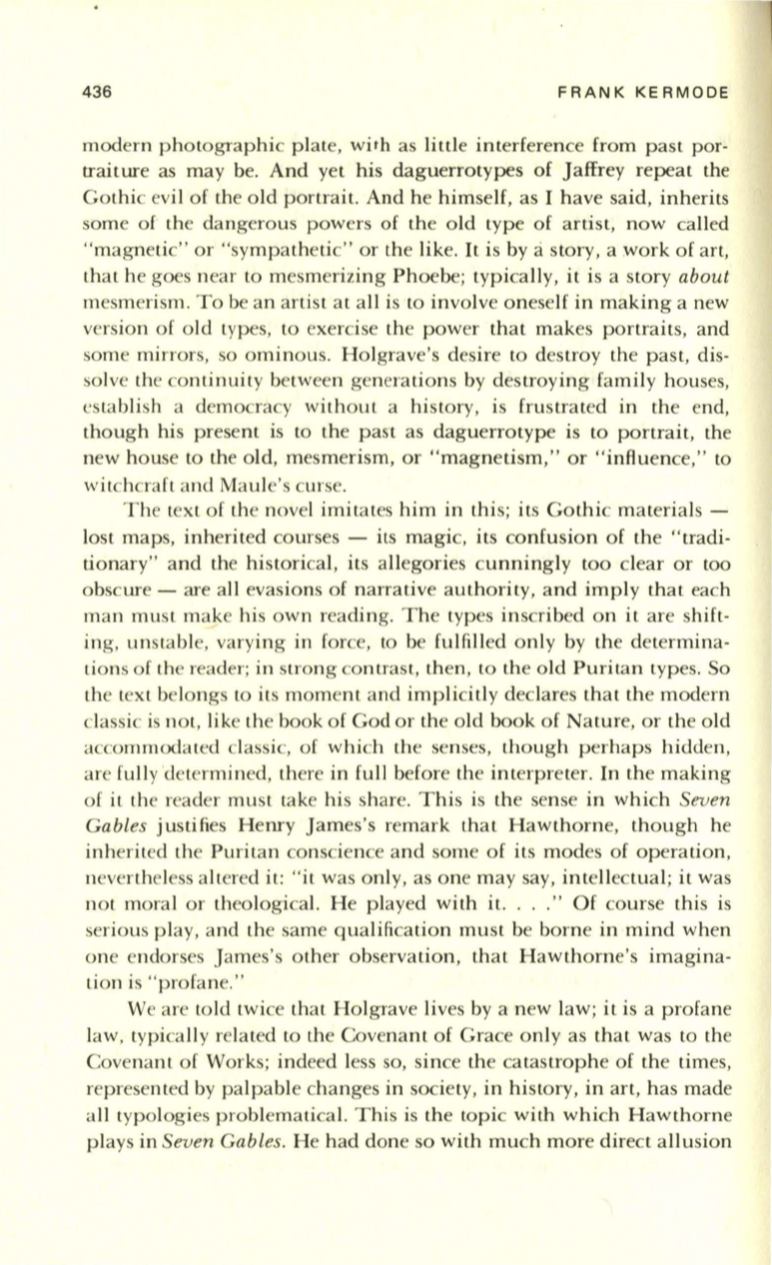
436
FRAN K KE RMODE
modern photographic plate, with as little interference from past por–
traiture as may be. And yet his daguerrotypes of Jaffrey repeat the
Gothic evil of the old portrait. And he himself, as I have said, inherits
some of the dangerous powers of the old type of artist, now called
"magnetic" or "sympathetic" or the like. It is by
a
story, a work of art,
that he goes near to mesmerizing Phoebe; typically, it is a story
about
mesmerism. To be an artist at all is to involve oneself in making a new
version of old types, to exercise the power that makes portraits, and
some mirrors, so ominous. Holgrave's desire to destroy the past, dis–
solve the continuity between generations by destroying family houses,
establish a democracy without a history, is frustrated in the end,
though his present is to the past as daguerrotype is to portrait, the
new house to the old, mesmerism, or "magnetism," or "influence," to
witchcraft and Maule's curse.
The text of the novel imitates him in this; its Gothic materials -
lost maps, inherited courses - its magic, its confusion of the "tradi–
tionary" and the historical, its allegories cunningly too clear or too
obscure - are all evasions of narrative authority, and imply that each
man must make his own reading. The types inscribed on it are shift–
ing, unstable, varying in force, to be fulfilled only by the determina–
tions of the reader; in strong contrast, then, to the old Puritan types. So
the text belongs to its moment and implicitly declares that the modern
classic is not, like the book of God or the old book of Nature, or the old
accommodated classic, of which the senses, though perhaps hidden,
are fully determined, there in full before the interpreter. In the making
of it the reader must take his share. This is the sense in which
Seven
Gables
justifies Henry james's remark that Hawthorne, though he
inherited the Puritan conscience and some of its modes of operation,
nevertheless altered it: "it was only, as one may say, intellectual; it was
not moral or theological. He played with it. ... " Of course this is
serious play, and the same qualification must be borne in mind when
one endorses James's other observation, that Hawthorne's imagina–
tion is "profane."
We are told twice that Holgrave lives by a new law; it is a profane
law, typically related
to
the Covenant of Grace only as that was to the
Covenant of Works; indeed less so, since the catastrophe of the times,
represented by palpable changes in society, in history, in art, has made
all typologies problematical. This is the topic with which Hawthorne
plays in
Seven Gables.
He had done so with much more direct allusion


